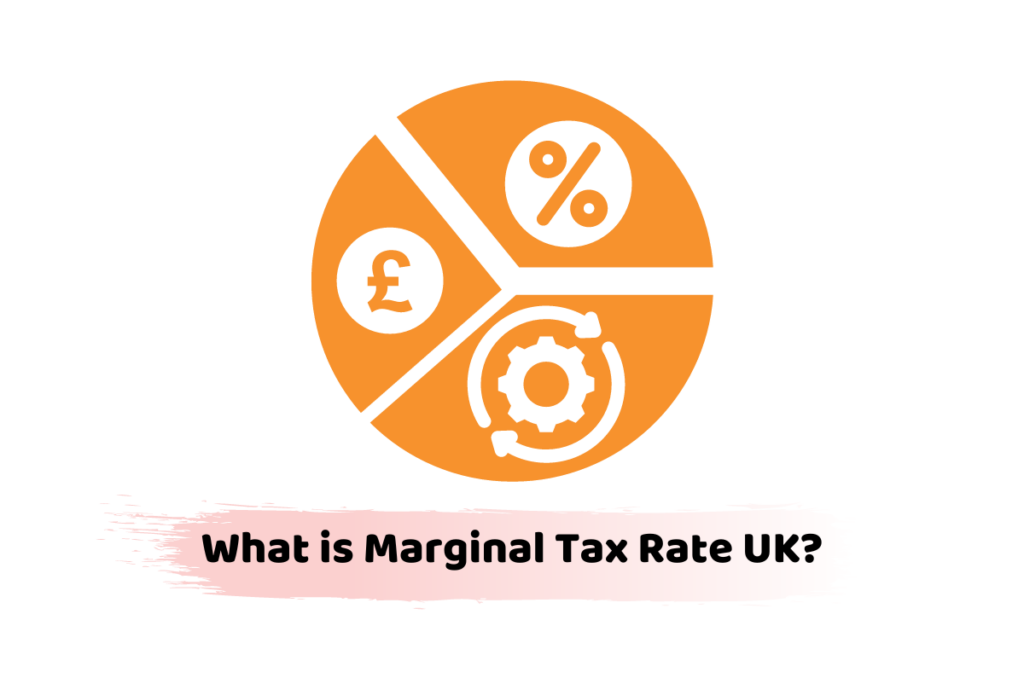The marginal tax rate is a fundamental concept in the UK’s tax system. It refers to the rate of income tax that an individual pays on each additional pound of income earned within a specific tax bracket. In this discussion, we will explore the importance of understanding the marginal tax rate in the UK. As well as its implications for self-employed individuals, high-income earners and strategies to mitigate the effects of losing child benefits for families with higher incomes.
Call or request a callback to speak to one of our professionals to discuss your queries about the marginal tax rate. We are available from 9:00 am – 05:30 pm Monday to Friday.
What is the Marginal Tax Rate UK?
For the 2023-2024 tax year, the UK’s income tax system consists of three marginal tax rates: 20%, 40%, and 45%. These rates apply to each pound of income earned within the relevant tax brackets:
- 20% Marginal Tax Rate: This rate applies to income between the personal allowance (currently £12,570) and £50,270.
- 40% Marginal Tax Rate: This rate applies to income between £50,271 and £150,000. For example, if an individual earns £60,000, the first £12,570 is tax-free, and the remaining amount is taxed at 20%. Then, the next amount is taxed at 40%. So, the marginal tax rate for each pound of income earned is 40%.
- 45% Marginal Tax Rate: This rate applies to income above £150,000. For example, if an individual earns £200,000, the first £12,570 is tax-free, and the remaining amount is taxed at 20%. Then, the next £47,250 (from £50,271 to £97,525) is taxed at 40%. Finally, the remaining £52,750 (from £97,526 to £150,000) is taxed at 45%. So, the marginal tax rate for each pound of income earned above £97,526 is 45%.
Why are Marginal Tax Rates Important if You’re Self-Employed?
Here are several reasons why the marginal tax rate is crucial for self-employed individuals in the UK:
Understanding Tax Liability
The marginal tax rate helps self-employed individuals determine the amount of tax they owe on each additional pound of income earned. It enables them to estimate their tax obligations and plan for potential tax payments.
Tax Planning
They may decide to adjust their pricing or restructure their business to minimise their tax liability. Additionally, understanding the marginal tax rate can help self-employed individuals plan for retirement and other long-term financial goals.
Saving and Investing
The marginal tax rate plays a role in determining the after-tax return on savings and investments for self-employed individuals.
National Insurance Contributions (NICs)
In the UK, self-employed individuals are required to pay both income tax and National Insurance Contributions (NICs). The marginal tax rate helps them determine the combined effect of income tax and NICs on their overall tax liability. This is essential for accurately estimating their tax obligations and ensuring they are compliant with the law.
Cash Flow Management
Self-employed individuals need to carefully manage their cash flow to ensure they have enough funds to cover their expenses, including tax payments. Knowing the marginal tax rate enables them to estimate their tax liability and plan for potential tax payments. Thereby helping them maintain a stable cash flow.
How Does it Matter in the Case of Loss of Child Benefits?
In the UK, the loss of child benefits can have significant financial implications for families. Particularly those with higher incomes. Here are several ways in which the loss of child benefits can matter:
Reduced Income
Child benefits provide a significant source of income for many families in the UK, particularly those with multiple children. Losing these benefits can result in a substantial reduction in household income. Which may impact a family’s ability to cover essential expenses such as food, clothing, and housing.
Impact on Budgeting and Financial Planning
The loss of child benefits can make it more challenging for families to budget and plan for their financial future.
Reliance on Other Forms of Support
When child benefits are lost, families may need to rely more heavily on other forms of support, such as tax credits or housing benefits. This can add complexity to the family’s financial situation and may require them to navigate multiple government programs and paperwork.
Work Incentives
In some cases, the loss of child benefits may affect a parent’s decision to return to work or increase their hours. If the additional income from working does not offset the loss of child benefits, a parent may decide to stay at home or reduce their working hours to care for their children.
Perception of Fairness
The loss of child benefits may be perceived as unfair by families who rely on this income to support their children. This can lead to feelings of frustration and resentment towards the government and the tax system, potentially impacting trust in public institutions.
Can I Mitigate the Effects?
In the UK, there are several ways to mitigate the effects of losing child benefits. Particularly if your income is above the threshold for claiming these benefits. Here is a detailed overview of strategies to help minimise the financial impact:
Budgeting and Financial Planning
The first step in mitigating the effects of losing child benefits is to review your household budget and financial plan. Identify areas where you can reduce expenses or find savings. Such as cutting back on non-essential spending or looking for suitable alternatives for necessities like groceries and utility bills.
Increasing Income
If possible, consider increasing your household income through methods.
Tax Planning
Review your tax situation and look for opportunities to reduce your overall tax burden. This may involve making use of available tax allowances and reliefs, such as pension contributions or charitable donations.
Saving and Investing
This can help provide a source of emergency funds or future income, reducing your reliance on child benefits.
The Bottom Line
In summary, the marginal tax rate is a critical component of the UK’s tax system, particularly for self-employed individuals and those with high incomes. By understanding the marginal tax rate and its implications on different aspects of personal finance. Individuals can make more informed decisions and better navigate the complexities of the UK’s tax landscape.
Get in touch with our young, clever, tech-driven professionals for your business if you want to know about marginal tax rate.
Disclaimer: All the information provided in this article on marginal tax rate, including all the texts and graphics, is general in nature. It does not intend to disregard any of the professional advice.





















































